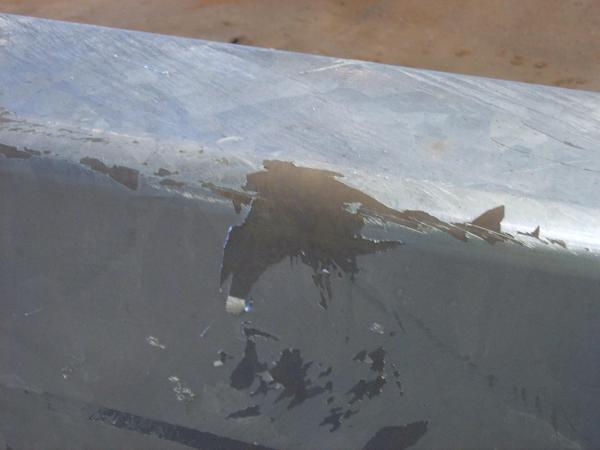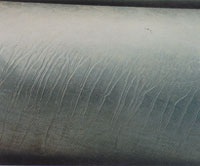Effect of Extending Cooling Times on Large Diameter and Thick Tubes
After large diameter or thick tubular steels are galvanized, these products often retain significant heat because hot air tends to remain trapped inside instead of rising up and away from the parts. These parts take longer to cool and galvanizers should be aware an extended cooling time can impact coating layer formation and overall appearance.
Galvanized products that take a long time to cool in the air will continue to form zinc-iron layers after they have been removed from the galvanizing kettle. This continued coating formation leaves behind a void between the top two layers of the galvanized coating, known as the Kirkendall Effect. If there are many voids formed, the top layer of zinc can separate from the rest of the coating and peel off the part.

To avoid peeling (Figure 1), large diameter and thick tubular steels should be cooled quickly and then handled when below 600F. Quench cooling the parts is ideal for rapid cooling, but when quenching is not an option the parts can be maintained at a steep angle to allow the hot air to rise from within the tube and then sprayed lightly with water over the surface. It is recommended to use a very fine mist spray of water, as other spray methods can negatively affect aesthetic appearance with a spotty look.

Another issue related to large diameter tubular product is the appearance of fish boning. Fish-boning (Figure 2) appears as an irregular pattern over the entire surface of the steel part. Fish boning is caused by differences in the surface chemistry of a large diameter steel piece and variations in the reaction rate between the steel and molten zinc. As large tubes retain significant heat after galvanizing, some zinc on the surface remains semi-molten and experiences a solid state flow. The semi-molten zinc slowly runs down along the diameter of the parts until it is able to cool and harden on the surface. This is what results in the zebra-stripe appearance. Although an aesthetic issue, fish boning does not affect the corrosion performance and is acceptable if the intended use of the product is unaffected. However, the fish boning appearance and raised areas do not significantly change over time as the part weathers.
© 2025 American Galvanizers Association. The material provided herein has been developed to provide accurate and authoritative information about after-fabrication hot-dip galvanized steel. This material provides general information only and is not intended as a substitute for competent professional examination and verification as to suitability and applicability. The information provided herein is not intended as a representation or warranty on the part of the AGA. Anyone making use of this information assumes all liability arising from such use.

